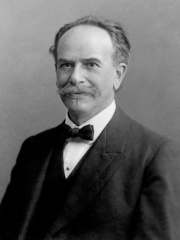
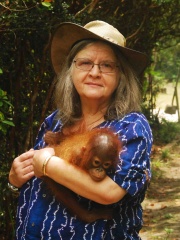
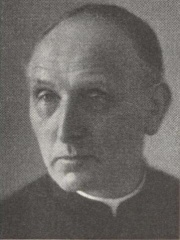
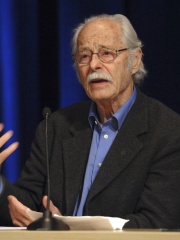
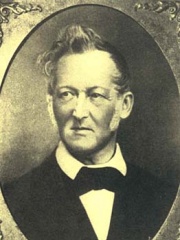
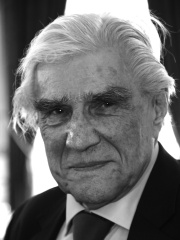
The Most Famous
ANTHROPOLOGISTS from Germany
This page contains a list of the greatest German Anthropologists. The pantheon dataset contains 93 Anthropologists, 7 of which were born in Germany. This makes Germany the birth place of the 4th most number of Anthropologists behind United Kingdom, and France.
Top 7
The following people are considered by Pantheon to be the most legendary German Anthropologists of all time. This list of famous German Anthropologists is sorted by HPI (Historical Popularity Index), a metric that aggregates information on a biography's online popularity.

1. Franz Boas (1858 - 1942)
With an HPI of 71.19, Franz Boas is the most famous German Anthropologist. His biography has been translated into 58 different languages on wikipedia.
Franz Uri Boas (July 9, 1858 – December 21, 1942) was a German-American anthropologist and ethnomusicologist. He was a pioneer of modern anthropology who has been called the "Father of American Anthropology". His work is associated with the movements known as historical particularism and cultural relativism. Studying in Germany, Boas was awarded a doctorate in 1881 in physics while also studying geography. He then participated in a geographical expedition to northern Canada, where he became fascinated with the culture and language of the Baffin Island Inuit. He went on to do field work with the indigenous cultures and languages of the Pacific Northwest. In 1887 he emigrated to the United States, where he first worked as a museum curator at the Smithsonian, and in 1899 became a professor of anthropology at Columbia University, where he remained for the rest of his career. Through his students, many of whom went on to found anthropology departments and research programmes inspired by their mentor, Boas profoundly influenced the development of American anthropology. Among his many significant students were A. L. Kroeber, Alexander Goldenweiser, Ruth Benedict, Edward Sapir, Margaret Mead, Zora Neale Hurston, and Gilberto Freyre. Boas was one of the most prominent opponents of the then-popular ideologies of scientific racism, the idea that race is a biological concept and that human behavior is best understood through the typology of biological characteristics. In a series of groundbreaking studies of skeletal anatomy, he showed that cranial shape and size was highly malleable depending on environmental factors such as health and nutrition, in contrast to the claims by racial anthropologists of the day that held head shape to be a stable racial trait. Boas also worked to demonstrate that differences in human behavior are not primarily determined by innate biological dispositions but are largely the result of cultural differences acquired through social learning. In this way, Boas posed culture as the primary concept for describing differences in behavior between human groups, and as the central analytical concept of anthropology. Among Boas's main contributions to anthropological thought was his rejection of the then-popular evolutionary approaches to the study of culture, which saw all societies progressing through a set of hierarchic technological and cultural stages, with Western European culture at the summit. Boas argued that culture developed historically through the interactions of groups of people and the diffusion of ideas and that consequently there was no process towards continuously "higher" cultural forms. Boas was a proponent of the idea of cultural relativism, which holds that cultures cannot be objectively ranked as higher or lower, or better or more correct, but that all humans see the world through the lens of their own culture, and judge it according to their own culturally acquired norms. By uniting the disciplines of archaeology, the study of material culture and history, and physical anthropology, the study of variation in human anatomy, with ethnology, the study of cultural variation of customs, and descriptive linguistics, the study of unwritten indigenous languages, Boas created the four-field subdivision of anthropology which became prominent in American anthropology in the 20th century.

2. Birutė Galdikas (b. 1946)
With an HPI of 68.91, Birutė Galdikas is the 2nd most famous German Anthropologist. Her biography has been translated into 39 different languages.
Biruté Marija Filomena Galdikas or Biruté Mary Galdikas, OC (born 10 May 1946), is a Lithuanian-Canadian anthropologist, primatologist, conservationist, ethologist, and author. She is a professor at Simon Fraser University. In the field of primatology, Galdikas is recognized as a leading authority on orangutans. Prior to her field study of orangutans, scientists knew little about the species.

3. Wilhelm Schmidt (1868 - 1954)
With an HPI of 64.38, Wilhelm Schmidt is the 3rd most famous German Anthropologist. His biography has been translated into 27 different languages.
Wilhelm Schmidt (February 16, 1868 — February 10, 1954) was a German-Austrian Catholic priest, linguist and ethnologist. He presided over the Fourth International Congress of Anthropological and Ethnological Sciences that was held at Vienna in 1952.

4. Fredrik Barth (1928 - 2016)
With an HPI of 62.88, Fredrik Barth is the 4th most famous German Anthropologist. His biography has been translated into 28 different languages.
Thomas Fredrik Weybye Barth (22 December 1928 – 24 January 2016) was a Norwegian social anthropologist who published several ethnographic books with a clear formalist view. He was a professor in the Department of Anthropology at Boston University, and previously held professorships at the University of Oslo, the University of Bergen (where he founded the Department of Social Anthropology), Emory University and Harvard University. He was appointed a government scholar in 1985.
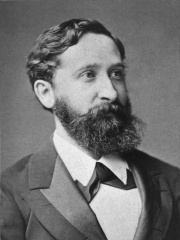
5. Adolf Bernhard Meyer (1840 - 1911)
With an HPI of 59.20, Adolf Bernhard Meyer is the 5th most famous German Anthropologist. His biography has been translated into 18 different languages.
Adolf Bernhard Meyer (11 October 1840, Hamburg – 22 August 1911, Dresden) was a German anthropologist, ornithologist, entomologist, and herpetologist. He served for nearly thirty years as director of the Königlich Zoologisches und Anthropologisch-Ethnographisches Museum (now the natural history museum or Museum für Tierkunde Dresden) in Dresden. He worked on comparative anatomy and appreciated the ideas of evolution, and influenced many German scientists by translating into German the 1858 papers by Darwin and Wallace which first proposed evolution by natural selection. Influenced by the writings of Wallace with whom he interacted, he travelled to Southeast Asia, and collected specimens and recorded his observations from the region.

6. Johann Carl Fuhlrott (1803 - 1877)
With an HPI of 58.27, Johann Carl Fuhlrott is the 6th most famous German Anthropologist. His biography has been translated into 17 different languages.
Johann Carl Fuhlrott (31 December 1803, Leinefelde, Germany – 17 October 1877, Wuppertal) was an early German paleoanthropologist. He is famous for recognizing the significance of the bones of Neanderthal 1, a Neanderthal specimen discovered by German laborers who were digging for limestone in Neander valley (Neanderthal in German) in August 1856. Originally disregarded, Fuhlrott, to his eternal credit, had the insight to recognize them for what they were: the remains of a previously unknown type of human.

7. Jean Malaurie (1922 - 2024)
With an HPI of 54.64, Jean Malaurie is the 7th most famous German Anthropologist. His biography has been translated into 15 different languages.
Jean Malaurie (22 December 1922 – 5 February 2024) was a French cultural anthropologist, explorer, geographer, physicist, and writer. He and Kutsikitsoq, an Inuk, were the first two men to reach the North Geomagnetic Pole on 29 May 1951. Malaurie was a director of studies at the School for advanced studies in social sciences (EHESS) and director and founder of the Terre Humaine collection published by Plon in which features his Last Kings of Thule (1955), translated into twenty-three languages and remaining the most widely distributed work on the Inuit. A defender of the rights of Arctic minorities, threatened by the industrial development of the Far North, Jean Malaurie became a UNESCO Goodwill Ambassador for Arctic polar issues.
People
Pantheon has 7 people classified as German anthropologists born between 1803 and 1946. Of these 7, 1 (14.29%) of them are still alive today. The most famous living German anthropologists include Birutė Galdikas. The most famous deceased German anthropologists include Franz Boas, Wilhelm Schmidt, and Fredrik Barth.
Living German Anthropologists
Go to all RankingsDeceased German Anthropologists
Go to all RankingsFranz Boas
1858 - 1942
HPI: 71.19
Wilhelm Schmidt
1868 - 1954
HPI: 64.38
Fredrik Barth
1928 - 2016
HPI: 62.88
Adolf Bernhard Meyer
1840 - 1911
HPI: 59.20
Johann Carl Fuhlrott
1803 - 1877
HPI: 58.27
Jean Malaurie
1922 - 2024
HPI: 54.64
Overlapping Lives
Which Anthropologists were alive at the same time? This visualization shows the lifespans of the 6 most globally memorable Anthropologists since 1700.

